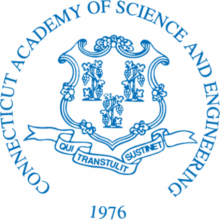Before Professor T.P. Ma began graduate work at Yale, he considered himself fluent in English. After all, he had excelled in English studies since eighth grade, and listened to American radio broadcasts of music and news. However, one day during a first-term math course taught by a British professor, T.P. arrived to class to find the room empty. He was confused. Where was everyone? Fortunately, he saw a classmate who explained that class was cancelled to provide study time for the next day’s major exam. T.P. was astounded, and spent that day and night preparing for the exam. Afterwards, he kept a radio by his bedside, falling asleep to late night talk shows to improve his listening skills. Now, almost forty years later, Professor Ma is not only fluent in English, but his outstanding contributions in the field of engineering render him one of the greatest scientists of our time and the 2008 recipient of the Connecticut Medal of Technology.
Tso-Ping Ma was born in the northwestern corner of China. Four years later, his parents fled Communism to settle in Taiwan, where he completed his education through college. After a year of military service, T.P. applied to Yale University, where he was accepted in 1969 and began work in semiconductor research. Professor Ma considers a serendipitous introduction to the “visionary” Richard Barker, his future mentor and advisor, to be a critical turning point in his career. Professor Barker enthusiastically embraced Ma’s interest in semiconductor research, arranging for grants from Bell Labs. At that time, the industry standard for gate dielectrics on semiconductors was 1,000 angstroms and “no one believed that they could be condensed to anything less than 100 angstroms.” T.P.’s thesis research on electron tunneling through ultra-thin gate dielectrics proved that it was indeed feasible to create a gate dielectric on semiconductors that functioned at 20 angstroms.
Semiconductors transmit electronic information. Gate dielectrics are insulators for this electron transmission, and as Professor Ma explains, “the insulator is like a wall upon which electrons are thrown, some electrons will seep through if the wall is too thin.” The task for Professor Ma was to strengthen the silicon dioxide gate dielectric with minimum quantities of nitrogen, allowing information to be most efficiently transmitted, without electrons leaking in the process. His work paved the way for high-k dielectrics, further extending the scaling limit. Ma is now researching a new type of dynamic random access memory (DRAM), to save energy, increase memory and provide far faster methods of communication for personal and industry use in everything from cell phones to medical and defense technology.
Professor Ma believes many young people do not realize their potential for making a difference. His mother encouraged him to pursue engineering to make significant contributions to society. Beyond his work on gate dielectrics, some of his many contributions include: chairman of the Department of Electrical Engineering at Yale, co-director of the Center for Microelectronic Materials and Structures at Yale, election to the National Academy of Engineering and the Connecticut Academy of Science and Engineering, and recipient of the 2006 Semiconductor Industry Association Award and the IEEE Andrew S. Grove Award. He advises youngsters to develop a strong foundation in math and science to have the needed tools. Tso Ping Ma would like to be remembered as an innovator who “believes in the use of technology to improve society, and an educator who brings up the next generation of innovators.”


